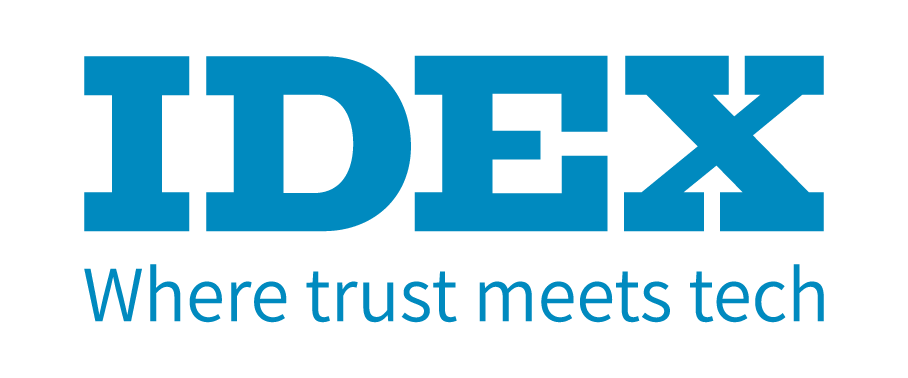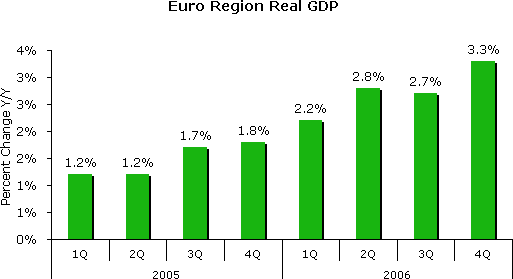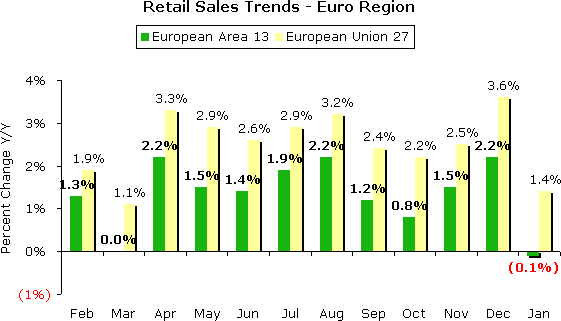IDEX Online Research: Good News & Bad News for Euro-Zone Economy
March 19, 07
During the fourth quarter of 2006, the Euro Region economy posted its strongest growth of any period in the current decade. That’s the good news. Now, the bad news: in January 2007, consumer spending, which has been the engine fueling the Euro Region economy, turned negative for the first time in two years. While a modest downturn in consumer expenditures in January 2007 was expected, the depth and breadth was unexpected.
The consensus outlook calls for continuing moderate growth for the European Region economy. However, there are many risks to this forecast, including inflation, rising interest rates, an appreciating Euro, increased global competition, and weaker demand from the U.S. Spending on discretionary goods, like jewelry, could be sluggish in 2007 in the Euro Region.
Fourth Quarter Economic Growth Strong
For the final quarter of 2006, economic growth in the Euro Region rose by a robust 3.3 percent over the same period a year ago. The economy was broadly supported by consumer spending, business investment, and strong exports.
Consumer spending represents just over half of Euro Region GDP. Significantly improved employment levels were the primary driver of consumer spending. During the fourth quarter, the unemployment rate fell to 7.5 percent, the lowest ever for the Euro Region; this helped boost consumer confidence.
The following graph summarizes economic growth in the Euro Region for the past eight quarters.

Source: EuroStat
In the business sector of the economy, both services and industrial production were strong. Foreign trade of goods and services also posted healthy gains in January. Exports expanded faster than imports, yielding an increased surplus in the Euro Region’s trade balance. Capital goods demand came primarily from central and eastern Europe. Services, such as banking, real estate, and legal services, also posted strong demand from global trading partners.
January Retail Sales Weak
Retail sales in the Euro Region weakened significantly in the 13 nations making up the Euro Area. During January, retail sales declined by 0.1 percent, year-to-year (green bar). Among the 27 nations of the European Union, retail sales were up by 1.4 percent (yellow bar), the smallest gain since February 2006, as the graph below illustrates.
|
|
Euro Region retail sales were affected by a retrenchment by German consumers, whose spending represents nearly 28 percent of the EA13 nations and nearly 20 percent of the EU 27 nations. The January 1, 2007, hike in Germany’s VAT was expected to put a damper on retail spending, but it was a much larger downdraft than expected.
Consumer spending in Portugal also showed a marked sluggishness during January.
While German retail demand was by far the weakest in the EU 27, sales were soft across the region. Among the major countries which have released data, only France showed a monthly increase.
Newer EU-member states – Latvia and Lithuania – also showed some strength, but they are too small to have much of an impact on Euro Region retail sales. Both countries together account for only 0.2 percent (two-tenths of one percent) of total retail sales in the EU-27 region.
Even non-Euro Region countries, such as Russia and the Ukraine, posted sharp declines in retail sales during January.
Using a three-month moving average to smooth consumer spending volatility, it appears that the overall retail sales growth was essentially flat from November 2006 to January 2007. Sluggish demand for higher ticket goods, coupled with a VAT-related consumer spending slowdown in Germany, were the two key drivers of the weak retail sales report in the Euro Region in January.
Outlook: Cautiously Optimistic
The biggest question about consumer spending in Europe is whether the slowdown in Germany is a one-time occurrence, or whether it portends the future. German households will be in no hurry to step up their spending, since they likely stocked up on many goods prior to the VAT increase at the beginning of the year.
But, there are reasons to be optimistic about the German consumer. An upswing in hiring, declining unemployment, and robust business and consumer confidence should help offset soft demand from the VAT hike. However, the savings rate by German households has continued to rise over the past decade; thus, there is a risk that households might pocket the windfall coming from a strengthening labor market, rather than spending more of their wages.
A long list of factors are a threat to economic growth in the Euro Region, including rising interest rates, the increased VAT in Germany, restrained wage growth, consumer price inflation, and a higher personal savings rate. From a global viewpoint, the projected economic slowdown in the U.S. as well as in many other global economies could also have a negative impact on Europe’s economy. Finally, a stronger currency will choke exports.
Consensus economic forecasts call for the European economy to grow at a 2.0 percent rate in 2007, down from 2006’s projected 2.6 percent increase. While this slowing growth rate is not disastrous, it will ultimately dampen consumer demand, especially for discretionary goods such as jewelry.
Note: Readers are reminded that, as of January 1, 2007, the Euro-Area expanded from 12 nations to 13 (Slovenia was added), and the European Union expanded from 25 nations to 27 (Romania and Bulgaria were added).
